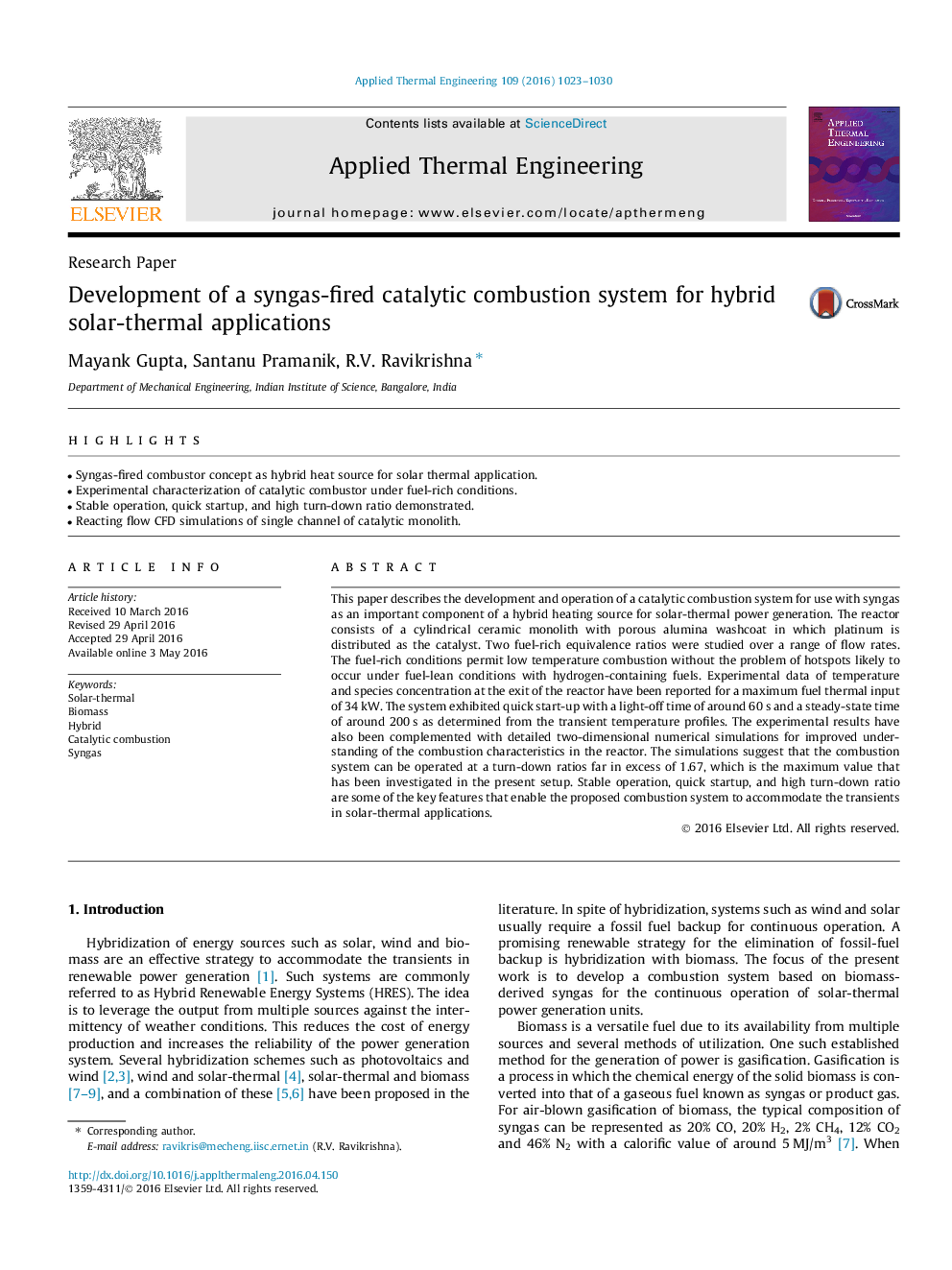| Article ID | Journal | Published Year | Pages | File Type |
|---|---|---|---|---|
| 4992221 | Applied Thermal Engineering | 2016 | 8 Pages |
•Syngas-fired combustor concept as hybrid heat source for solar thermal application.•Experimental characterization of catalytic combustor under fuel-rich conditions.•Stable operation, quick startup, and high turn-down ratio demonstrated.•Reacting flow CFD simulations of single channel of catalytic monolith.
This paper describes the development and operation of a catalytic combustion system for use with syngas as an important component of a hybrid heating source for solar-thermal power generation. The reactor consists of a cylindrical ceramic monolith with porous alumina washcoat in which platinum is distributed as the catalyst. Two fuel-rich equivalence ratios were studied over a range of flow rates. The fuel-rich conditions permit low temperature combustion without the problem of hotspots likely to occur under fuel-lean conditions with hydrogen-containing fuels. Experimental data of temperature and species concentration at the exit of the reactor have been reported for a maximum fuel thermal input of 34 kW. The system exhibited quick start-up with a light-off time of around 60 s and a steady-state time of around 200 s as determined from the transient temperature profiles. The experimental results have also been complemented with detailed two-dimensional numerical simulations for improved understanding of the combustion characteristics in the reactor. The simulations suggest that the combustion system can be operated at a turn-down ratios far in excess of 1.67, which is the maximum value that has been investigated in the present setup. Stable operation, quick startup, and high turn-down ratio are some of the key features that enable the proposed combustion system to accommodate the transients in solar-thermal applications.
